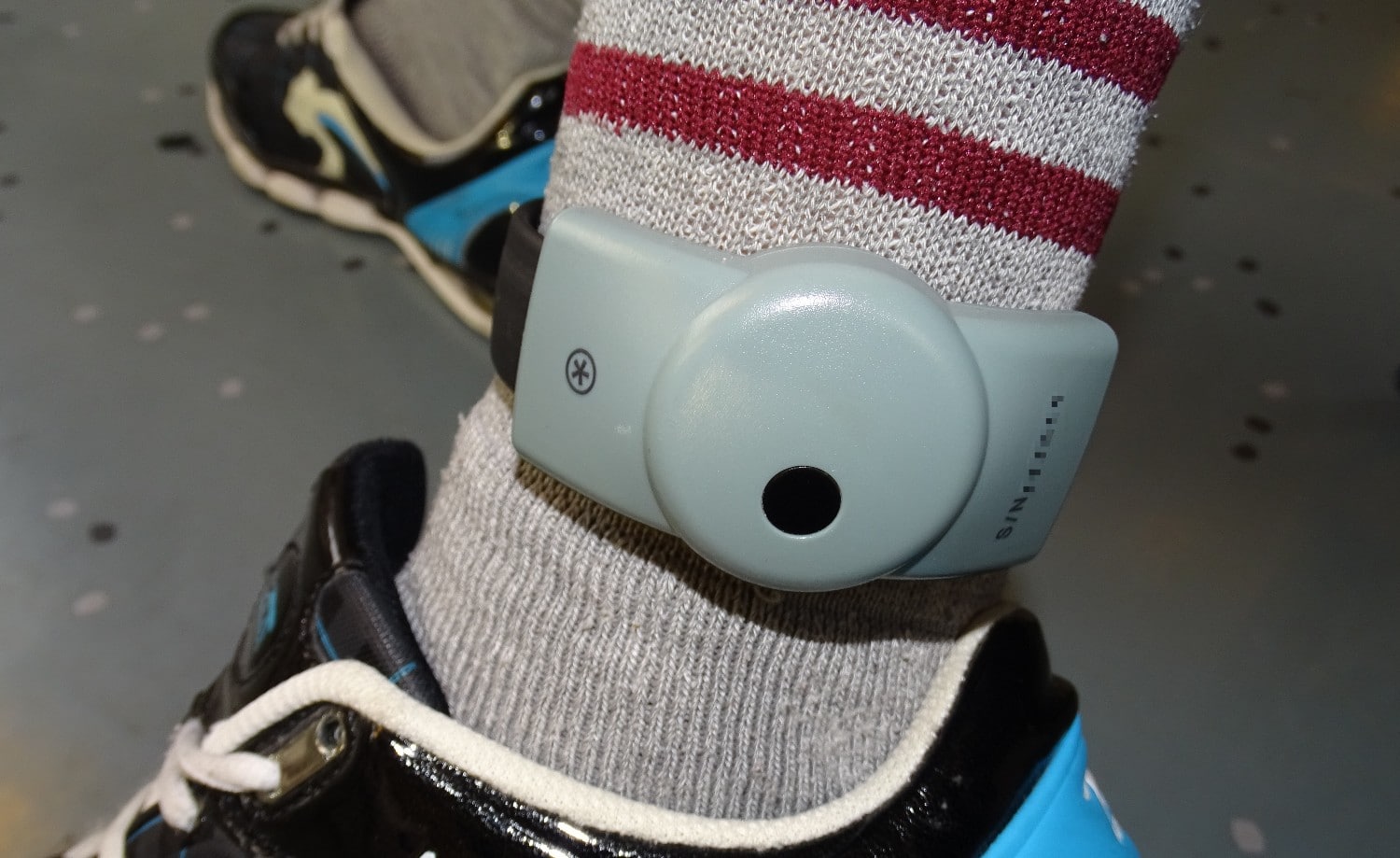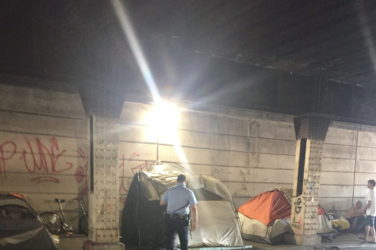Place Maya Schenwar and Victoria Law together on a street corner in an impoverished neighborhood and they’ll see examples of a new and expanded carceral system in every direction they look.
A man walks toward them and the journalists spot an ankle bracelet, monitoring his location electronically. Several members of a group across the street are on probation, and Schenwar and Law visualize numbers floating above the mens’ heads, counting down the years until they’re free from the ever-present threat of incarceration. Behind Schenwar and Law, inside an apartment building, a woman stares out the window, confined under house arrest.
Down at the other end of the street, a pair of beat cops whistle as they walk. They look friendly enough but, as Schenwar and Law explain in their new book, Prison by Any Other Name: The Harmful Consequences of Popular Reforms (The New Press, 2020), the officers represent a violent expansion of policing that is widening US authorities’ net to control ever-greater numbers of people.
“Other reforms that we talk about in the book, they’re less visible,” Schenwar told Filter in a telephone interview. “They’re about hiding people away.”
“We’re expanding the number of people under the physical control of the state.”
These include mandated-treatment facilities that house people arrested for drug possession, for example, and psychiatric hospitals that hold people apprehended for mental health crises. “All of these things that abolition activist Mariame Kaba calls, ‘the Somewhere Else,’” Schenwar continued.
“We’re expanding the number of people under the physical control of the state,” Law said in the same interview. Without the options of the Somewhere Else, “They might have been given some kind of sentence that was looser and that maybe did not involve as many requirements,” Law added. “And so this [push for out-of-prison alternatives] is actually expanding the number of people who are caught.”
Schenwar, the editor-in-chief of Truthout, and Law, a freelance journalist (who has written for Filter) and cofounder of NYC Books Through Bars, have written a spiritual successor to Michelle Alexander’s The New Jim Crow: Mass Incarceration in the Age of Colorblindness. It includes a foreword by Alexander. Focusing less directly on race—but maintaining a required awareness of systemic racism—Prison by Any Other Name loosely picks up at the prison walls where The New Jim Crow left off.
The book details an ever-creeping expansion of the prison-industrial complex, beyond barbed-wire fences, into people’s communities, schools and the very homes in which they live. It notes that the number of people in America under electronic monitoring increased from 53,000 in 2005 to 125,000 in 2015.
This would not be okay even if during the same period, the numbers of people in jails and prisons had decreased (they did not over the whole period, despite declines toward the end). The goal of reforms should be fewer people caught up in the system and indeed, its total transformation, not the same number transferred from one form of “correctional control” to another.
“These varying manifestations of the criminal punishment system raise the question of what defines a prison,” Schenwar and Law write in the book. “There is unique gravity to an actual prison sentence, the violence of locking a human being in a cage. Yet the system is broader than the buildings called ‘prisons.’ Manipulation, confinement, punishment, and deprivation can take many forms—forms that may be less easily recognized as the violence they are.”
“Drug courts are trying, sentencing, and confining people who in many cases wouldn’t otherwise be incarcerated.”
Take the example of drug courts.
As the opioid-involved overdose crisis of the 2000s replaced the “crack epidemic” of the 1980s and early ‘90s, the impacted populations in the spotlight initially shifted from Black people to white. That’s resulted in a so-called kinder, gentler War on Drugs, and encouraged politicians, like Democratic presidential nominee Joe Biden, to embrace drug courts as a treatment-based alternative to prison. But the extent to which drug courts are less violent than incarceration is highly debatable, the book argues.
“Instead of simply providing an alternative for people who would otherwise be sent to prison, drug courts are trying, sentencing, and confining people who in many cases wouldn’t otherwise be incarcerated,” it explains.
“The existence of courts designed to handle minor drug-related charges has been shown to encourage police to make those types of arrests—a kind of ‘if you build it, they will come’ phenomenon,” the book continues. “Police know these courts exist to handle an increase in small-time drug cases, and so they are more likely to make small-time drug arrests. As Denver district court judge Morris B. Hoffman stated, ‘It is clear that the very presence of drug courts is causing police to make arrests in, and prosecutors to file, the kinds of ten- and twenty-dollar hand-to-hand drug cases that the system simply would not have bothered with before.’”
And then there’s this: “Approximately half of people sentenced to a program through drug court don’t finish—and the ones that don’t often end up with harsher jail or prison sentences than if they hadn’t gone the drug court route in the first place.”
Schenwar and Law place this effect—“widening the net,” they call it—at the center of everything wrong with the current trajectory of prison reform.
“They [politicians] love the idea of diversion,” Schenwar said. “But you still arrest people for drug offences, you still criminalize drugs, you still criminalize all kinds of actions that may result from drug use or addiction. But instead [of prison], you funnel people into this alternate system because somehow it will help people by providing quote-unquote ‘treatment.’”
“And then when people violate the terms of their drug-court sentence—which happens so often because those terms are very rigid and very strict—then often the penalty is incarceration, and often it is the maximum sentence,” she continued.
Prison by Any Other Name was released against the urgent backdrop of the Black Lives Matter movement’s second wave. Both Schenwar and Law advocate for the abolition of the entire penal system—arguing that what’s needed for the creation of a more just society is wider access to quality education, improved options for employment, a drastically better healthcare system that includes mental health services, and other holistic reforms.
“When she died of an overdose, she was in an abstinence-based drug court program.”
Lending authority, they both come to the book’s topics from personal experience.
“Victoria, or Vikki as she’s known to friends, was once on probation,” the book reads. “At sixteen, Vikki was arrested for several counts of armed robbery and gun possession, all of which are violent felony charges … She was ultimately sentenced to five years of probation.”
Schenwar told a different story. “For me, this issue is very personal because my sister was in and out of jails and prisons for about 15 years and then in and out of all kinds of alternatives: electronic monitoring, drug-treatment centers and all kinds of things,” she said.
“She was in drug court in February when she died,” Schenwar continued. “When she died of an overdose, she was in an abstinence-based drug court program.”
Schenwar explained that her sister was mandated to remain abstinent or risk jail time. She did remain off drugs, for a while. But then, when she eventually relapsed, her tolerance was lower than she realized. If her sister had been offered something better tailored to her as an individual, maybe the outcome would have been different, Schenwar said, anger audible in her voice.
“Drug court played a role in her killing,” she added. “It was not her survival that counted in this system. It was whether she was following the law.”
Photograph by Jérémy-Günther-Heinz Jähnick via Wikimedia Commons/Creative Commons 3.0





Show Comments